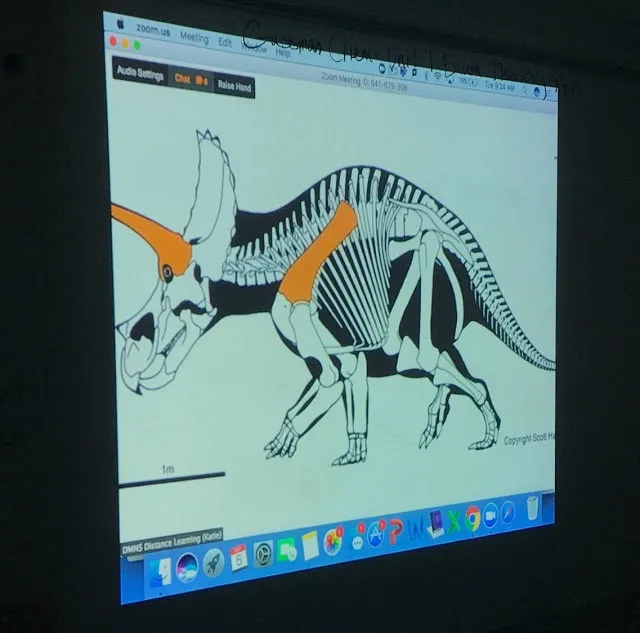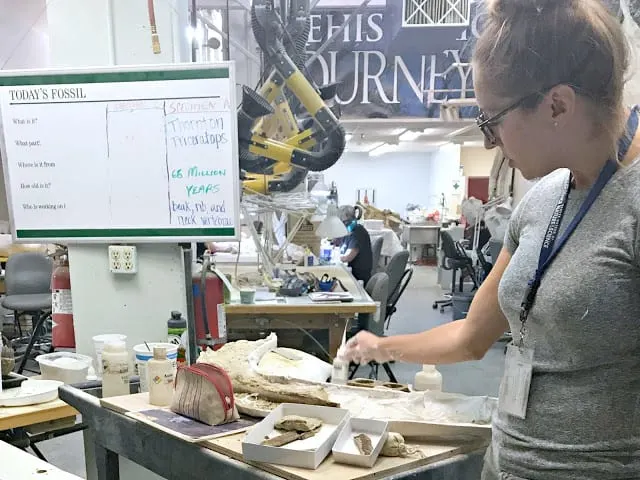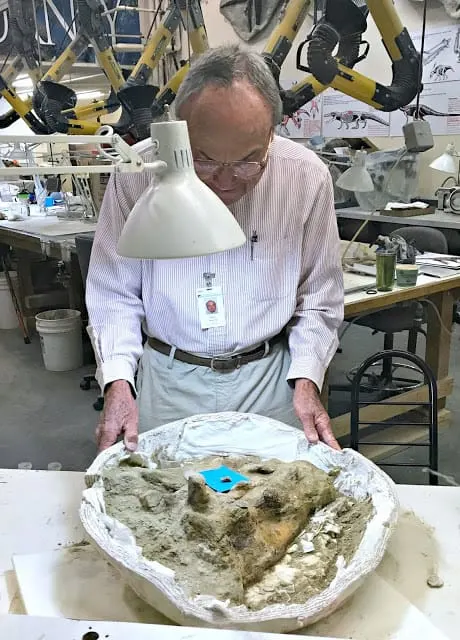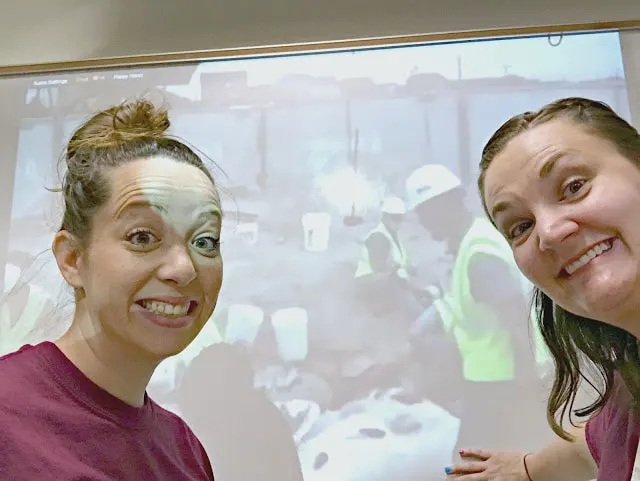I have been losing my mind all weekend about our talk with the Thornton triceratops. I did a screencast of the chat we had and it was amazing. However, I do not have permission to show the students featured, on my blog, so I will not be posting it. I do have answers to several of the questions that were asked on my Facebook page and am going to share them below!
1. Could there be more in the area?
Yes! In fact Colorado is known to be a great place for dinosaurs because of our topography and placement on the K/T boundary which is the little layer of rock that represents the worst day on Earth when the astroid hit the Earth and wiped out more than 1/2 of life on Earth.
2. Was the Thornton Triceratops young or old?
Preliminary examinations of the Thornton Triceratops indicate that it was probably a older adolescent or small adult. When triceratops become adults their horns straighten out more and this triceratops horns are beginning to straighten out.
 |
| The bones in orange were the ones that were already removed from the site |
3. How long has the Thornton Triceratops been there?
Colorado lies on the K/T boundary as mentioned above so we can date this fossil to about 66 millions years old.
4. How did the Thornton Triceratops get there?
Triceratops lived in this area. They are still excavating and so they are not sure how it died or if it was killed by something, but they hope to get more clues as they remove more of the fossils.
5. What was this area like at the time?
Colorado has changed a lot in the history of Earth. It has been covered by the ocean, had active volcanos and was at once a rainforest as well. At the time of the triceratops, the ecosystem would have been a subtropical savanna that was humid and lush with foliage.
 |
| This is a rib bone and fragments that are currently being prepped at the Denver Museum of Nature & Science |
6. Was it traveling through or are they known to have existed in the area?
They were definitely known to have lived in the area, in fact triceratops was one of the most common dinosaurs in this area!
7. Is it possible there are others?
Yes! It is always possible. However, triceratops do not typically live in groups, so it is unlikely that they will find another triceratops in the same area.
8. How far down did they have to dig before they discovered the Thornton Triceratops?
I didn’t get a direct answer to this question. I was told that they were digging deeper than they normally would because they are putting a parking garage underground, but the exact depth was not given and from the video feed it really did not look that deep at all, maybe like 1 meter deep.
 |
| This is a portion of the vertebrate and the sticky note says “this bone goes somewhere here”🤣 |
9. Do they anticipate doing any other digging in the area in hopes of finding more fossils and bones?
Nothing is planned, but the curator joked with all our students to go dig in their backyards and give them a call when they locate something big. They said there are dinosaurs all over this area of Colorado and that they are sure many many more will be left to find for years to come!
10. Is the Thornton Triceratops a male?
They cannot determine gender of the Thornton Triceratops just yet and in fact it is difficult to do so with dinosaurs, but the curator said if he had to guess based on size he would go with female.
11. What did they eat?
Triceratops are herbivores so they eat plants. What is cool about them is that they were probably graziers but because they have that sharp pointed beak, they could tear food easier and they also hypothesize that the horns were used to push over larger plants to eat!
 |
| Just two science teachers, trying to take a selfie with a video chat |
It was truly amazing to be invited virtually onto the job site, to chat with the curator and ask them questions and to watch our students geek out with us! Our science department and school really felt honored to be chosen and had a great time learning and crushing on our new little triceratops! We cannot wait to help name it and see how much of the skeleton they are able to recover!
Curious about other science teacher resources? Check out Legends of Learning.




